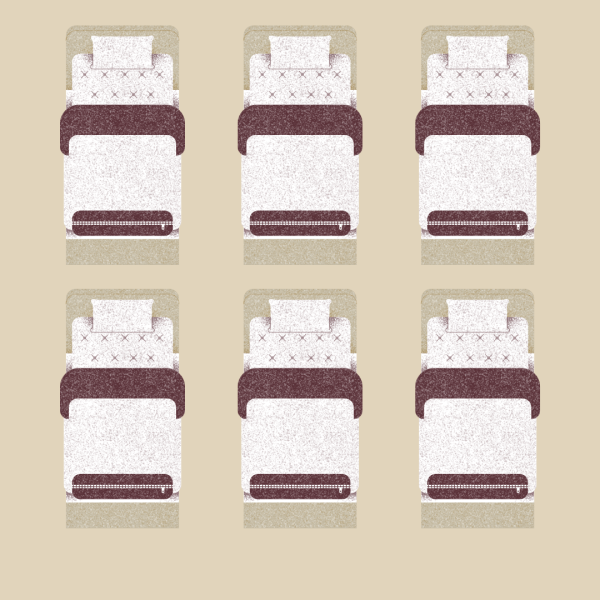Set Your Clocks and Your Habits
We must take DST’s seemingly arbitrary changes in time seriously and understand the effects of the practice can be much more severe than simply an hour loss or gain of sleep one evening.

Many of us woke up particularly well-rested this past Sunday after shifting our clocks an hour behind to comply with the end of Daylight Saving Time (DST). This additional hour might have come as a welcomed gift, however one decided to spend it, but the manual time changes associated with DST are unnatural disruptions to our bodily systems, and ones that have consequences.
While there can be confusion surrounding the purpose and relative value of the practice, people are generally familiar with the annual tradition requiring them to “spring forward” and “fall back.” Losing and gaining an hour of sleep becomes a factor to lament and celebrate, but for the fleeting evening in which we get that blissful extra hour, DST poses several other downsides.
The practice of DST has somewhat of an ambiguous history. Many believe the tradition began in order to give farmers more hours of sunlight to work in the field. Today, many countries use the system to reduce electricity usage by capitalizing on sunlight.
However, there are many places that do not participate in DST, such as Hawaii and Arizona. Some people go as far as to advocate for permanent DST for a variety of reasons.
Those who are proponents of permanent DST cite a harmful change to daily rhythms and negative effects on productivity levels. An estimate places this decrease in productivity at over $434 million annually: money that is not made up in the fall when workers get an additional hour of sleep.
However, an extra hour of evening sunlight for more of the year would come at the cost of delayed sunrise during winter months. Such darkness in the morning, particularly when paired with inclement weather, can prove to be not only an inconvenience but also a danger for people who go to work or send their kids to school early.
The question of the practice’s value in our contemporary society is an important one to pose in general, but as this year’s DST comes to a close, it is crucial that people check in with their mental health and take the system’s potential to have negative impacts on both their minds and bodies seriously.
The shifts in time presented by DST can disrupt normal bodily systems in a multitude of ways.
Our brains each have a master clock that syncs time in the body using hormonal and chemical signals. This “clock” regulates many of our internal processes, and imbalances in these systems are a factor of many diseases such as cancer, diabetes, neurodegenerative disorders, psychiatric disorders and heart disease.
Scientists have begun to research the ability of a regulated human clock to prevent, slow down or even treat many diseases, and studies have found that disrupting natural body rhythms negatively affects overall health.
During the days immediately after we change our clocks ahead — and lose what often proves to be a precious hour of sleep — Americans are at a slightly greater risk of heart attack and stroke, and car crashes and workplace accidents increase.
To avoid stark alterations to these internal systems, it is suggested that individuals get to sleep a bit earlier for a few of the days leading up to the beginning of DST. Similarly, waking up earlier (in small, increasing increments) for a handful of mornings before the event can help make the hour shift feel less drastic.
Though participants gain an extra hour of sleep at the close of DST, “falling back” presents its own set of challenges, as well. Not only do days begin to shorten naturally during fall and winter months, but the manual clock change causes the sky to appear darker an hour earlier than it previously had.
This compounded darkness and comparative lack of sunlight can have a strong impact on individuals’ mental state.
Many people can experience what is known as seasonal affective disorder (SAD), a type of depression directly related to seasonal changes. Scientists believe the disorder to be based around changes in individuals’ body clocks, as well as shifts in melatonin and serotonin levels, as a result of reduced levels of sunlight.
It is clear that the end of DST and its accompanied backward shift in time can exacerbate the negative effects of such mood disorders.
SAD, specifically, can be treated by means of light therapy, medication or psychotherapy and relaxation techniques. Meditation or music and art therapy are other ways to tend to such symptoms.
Treatments for such mood disorders are extremely personal, however, so methods that work for some might not for others. If you begin to notice differences in your mental and bodily well-being, consider that these experiences might be linked to DST. There might be other factors at play, but it is worth recognizing that DST’s external alterations can have intense, internal ramifications on your life nonetheless.
As the days continue to get shorter, colder and gloomier, healthy habits are crucial in combating symptoms of depression and other disorders that may be heightened during this time. We must take DST’s seemingly arbitrary changes in time seriously and understand the effects of the practice can be much more severe than simply an hour loss or gain of sleep one evening.
After we do so, it would then be valuable to readdress the practice of DST, considering the possibility that it might harm more than it helps in our modern age.
Enjoy your recent extra hour of sleep, but for as long as it’s still around, DST can and should serve as an annual reminder to check in with ourselves and each other.











